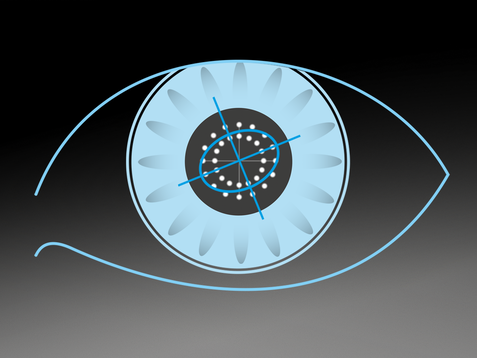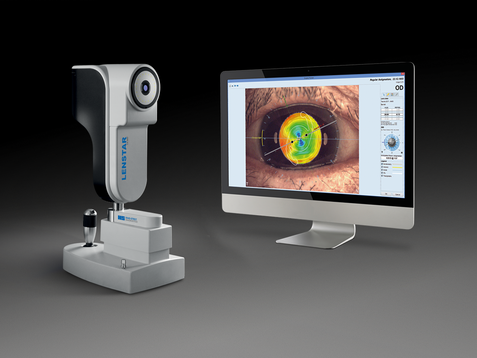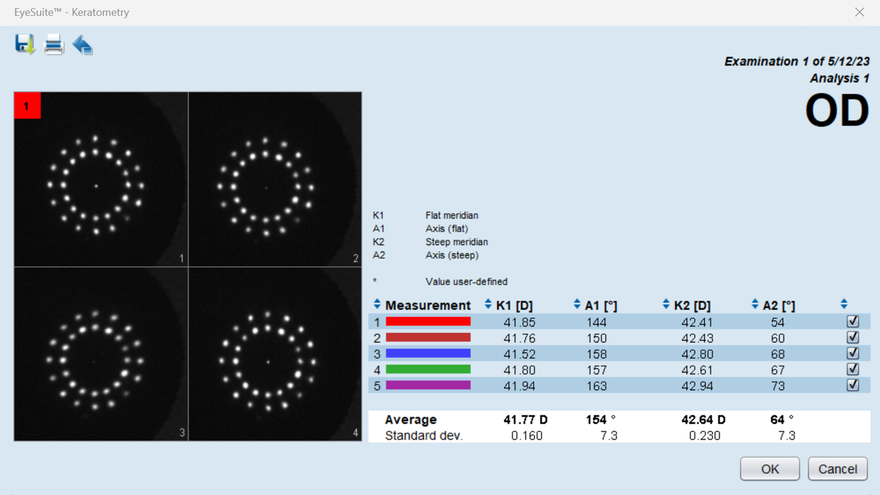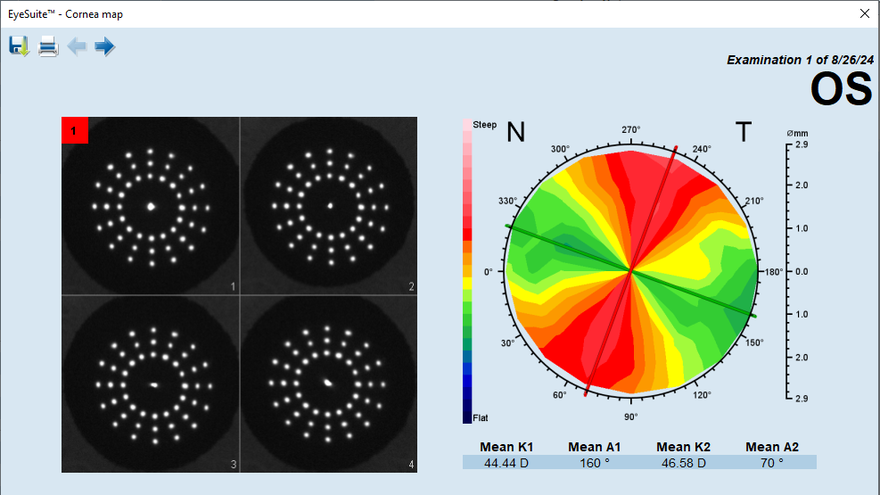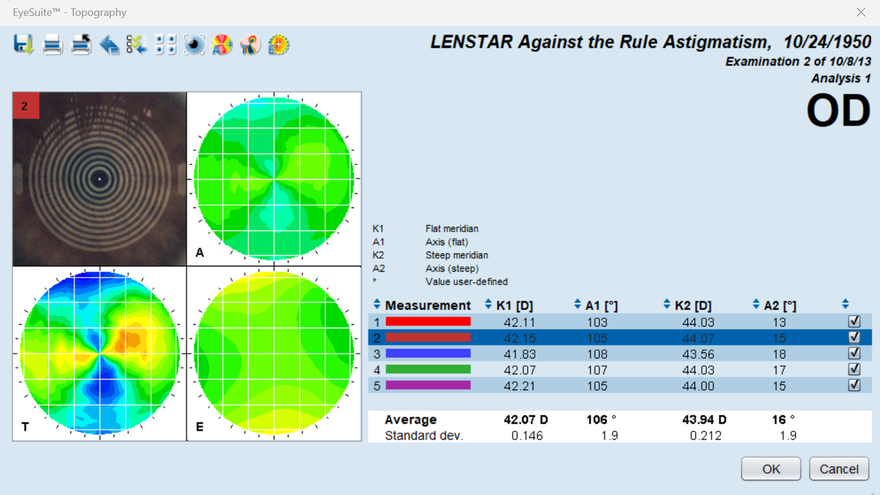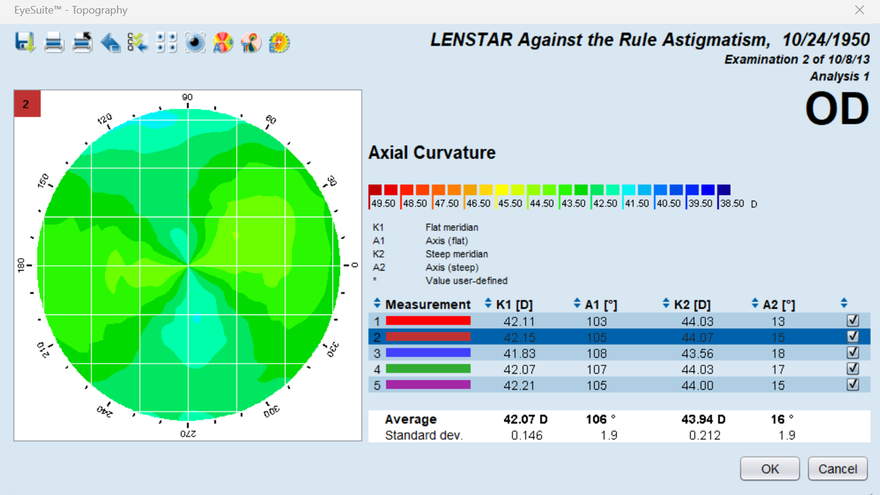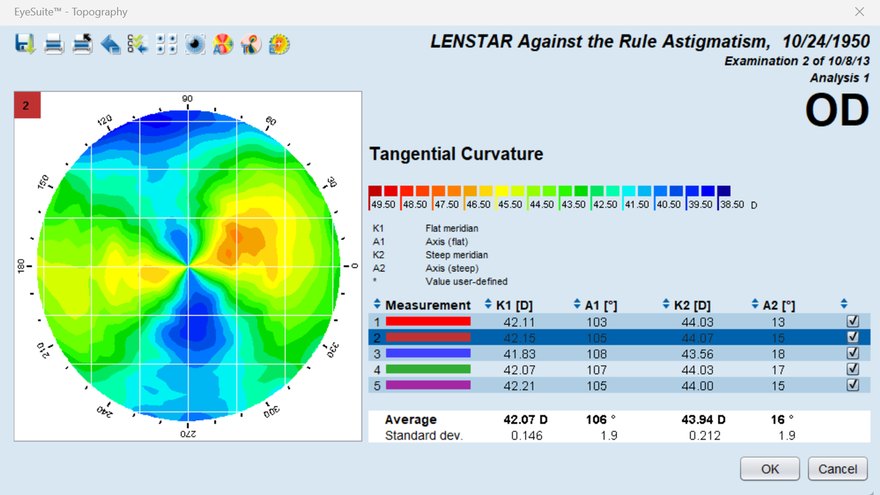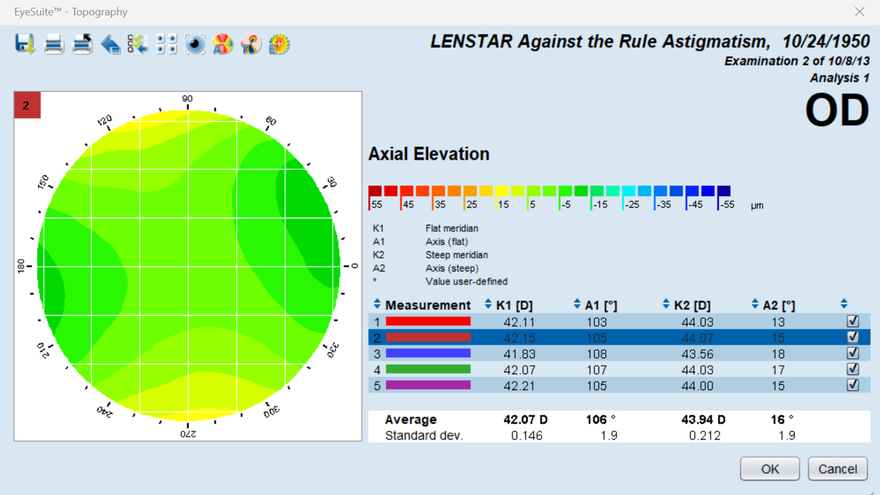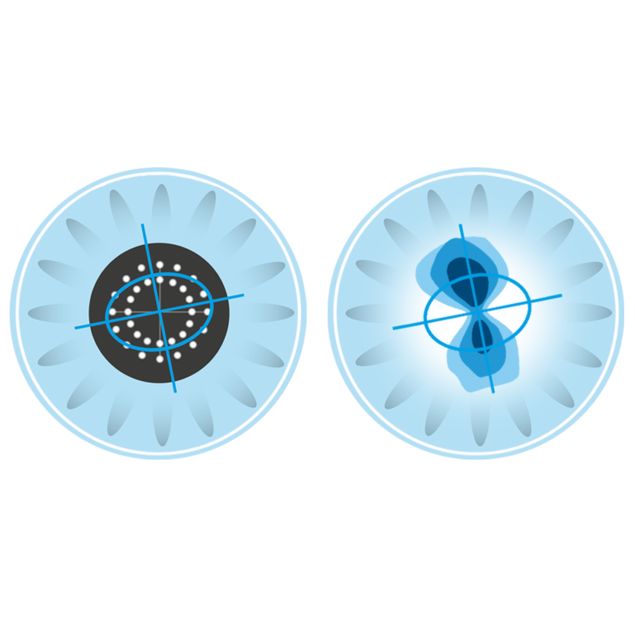
Biometry
High precision keratometry & topography
Optimal IOL selection & refractive outcomes
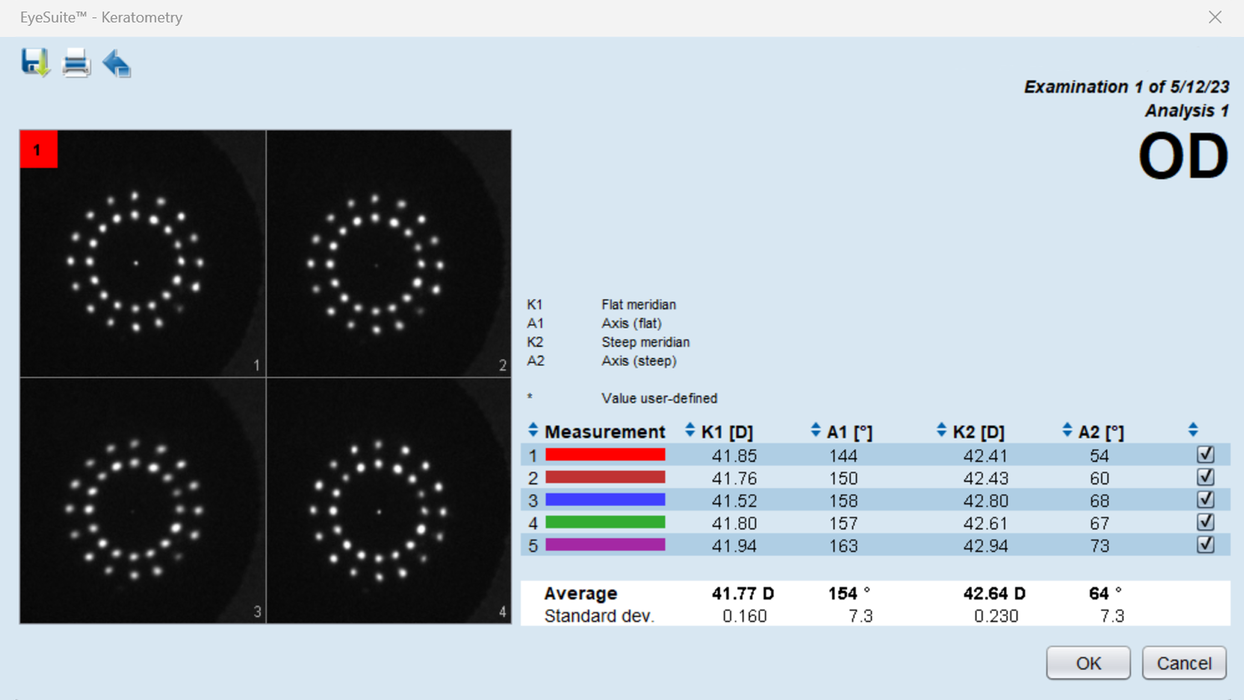
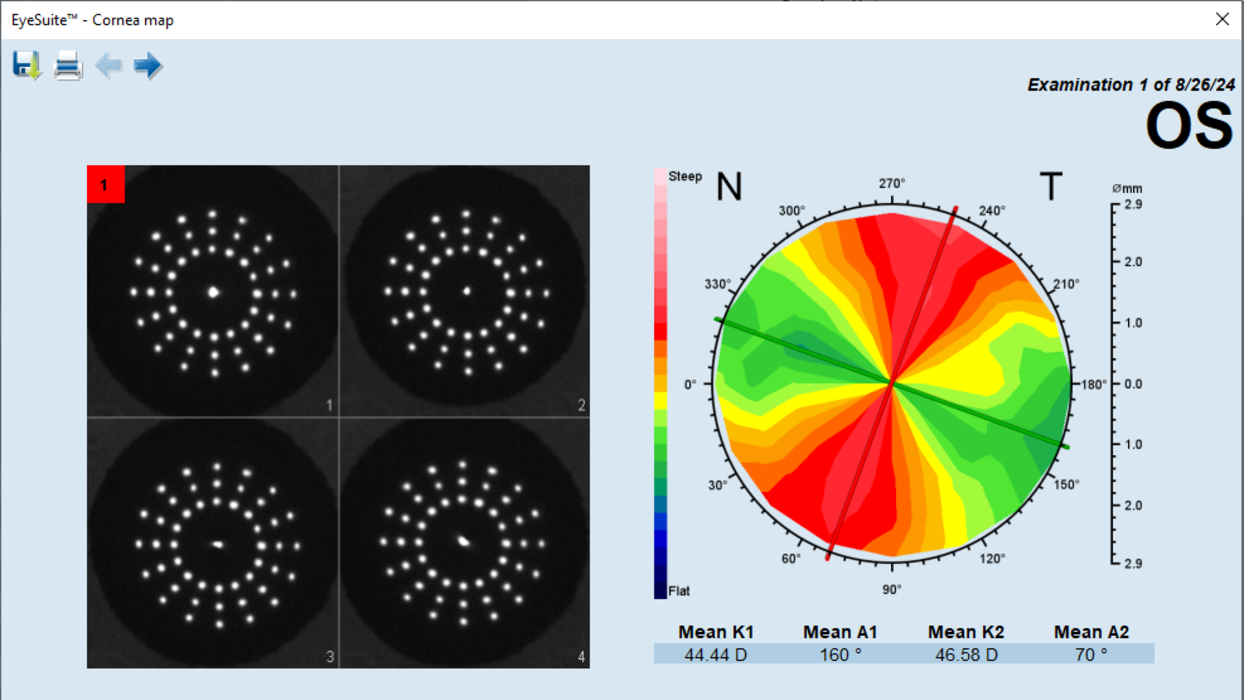
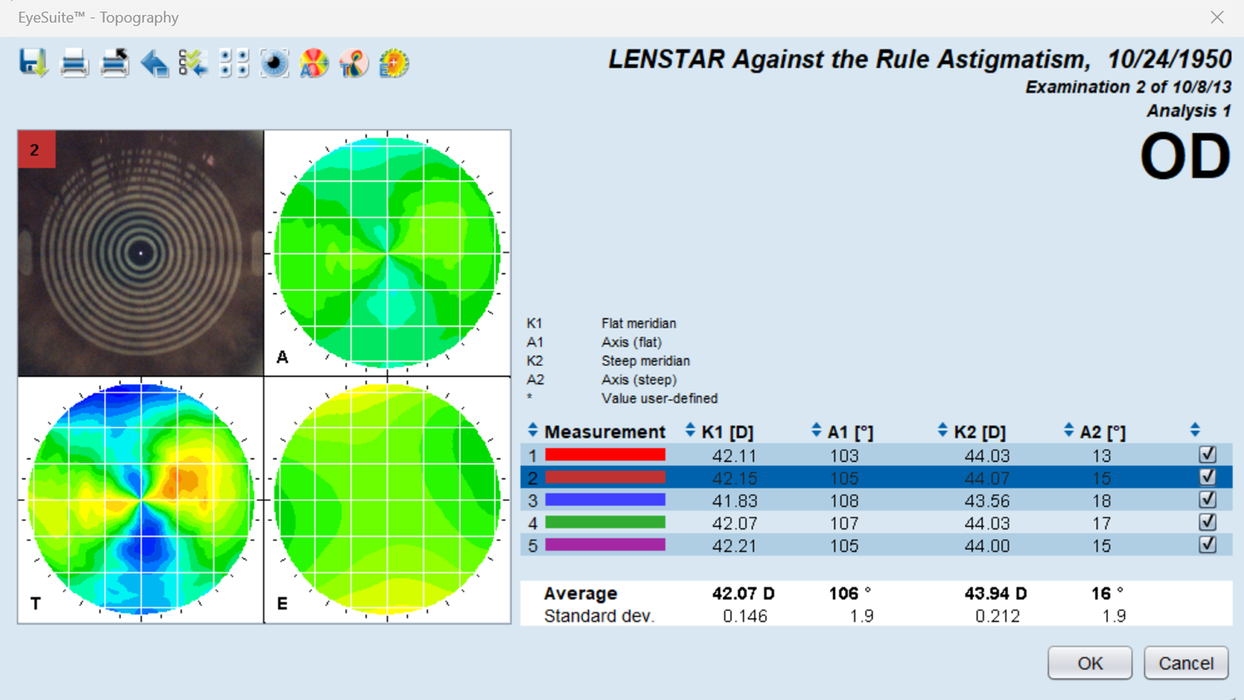
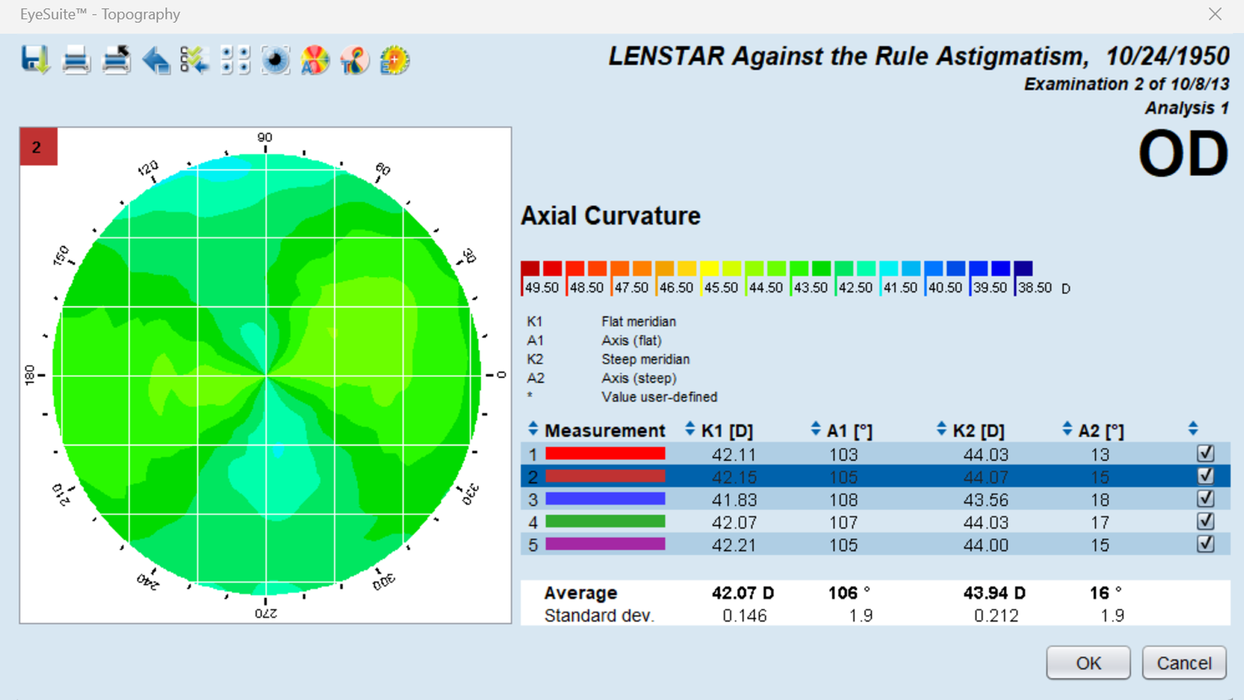
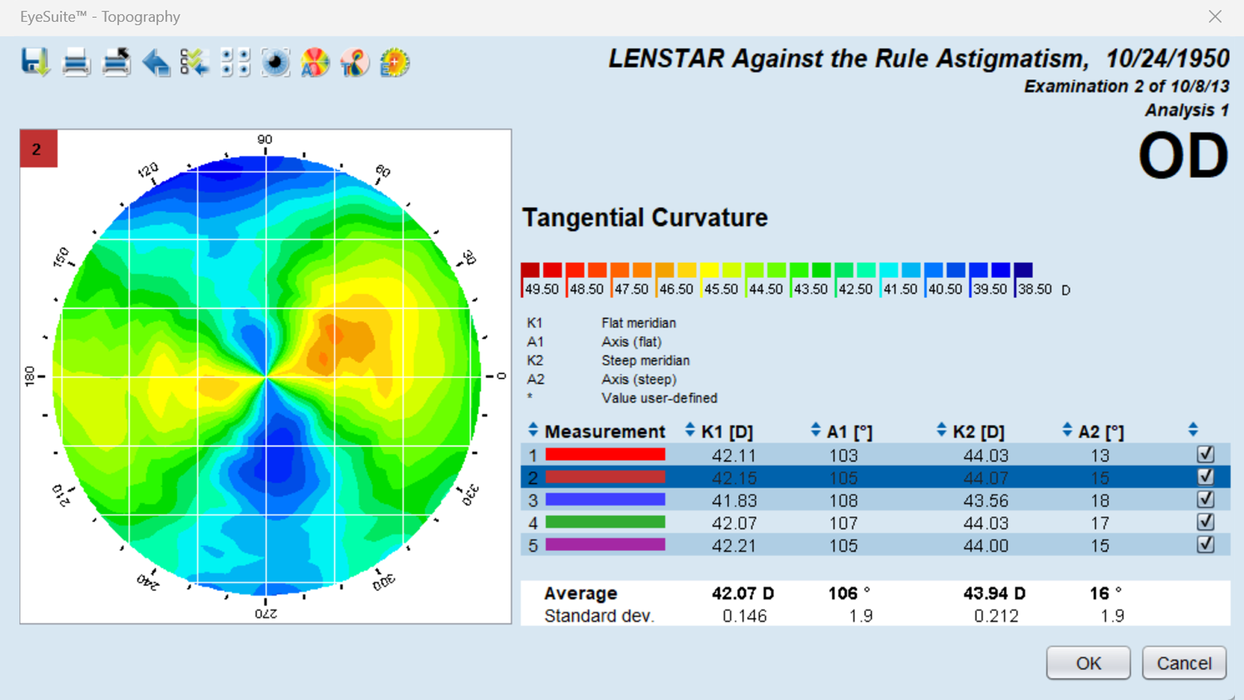
Keratometry overview
Detailed data review & quality management
The keratometry overview screen provides a concise and comprehensive overview of all relevant data. This enables an efficient review of the image quality of the keratometry measurement points related to the patient's tear film stability. Using this information allows a user to make an informed decision about which specific datapoints to include and which ones to exclude from the final examination calculation.
Cornea map overview
Decision support for toric candidates
The Cornea map overview shows the axial curvature map of the anterior central cornea that is calculated based on 48 measurement points (right). The cornea map indicates whether an astigmatism is regular and symmetrical. The quality control (left) displays infrared images of the reflected keratometry points on the cornea (Four images per K-reading).
Topography overview
Topography data review and quality management
The topography overview screen provides a concise and comprehensive overview of captured topography information and includes axial and tangential curvature as well as elevation maps and images of Placido ring reflections for each individual measurement taken. This allows an efficient review of data and image quality and supports detection of artefacts such as a torn tear film break up or obstructing eye lashes. In addition, users can easily include or exclude individual measurements to obtain optimum topography results.
Axial curvature map
Assessment of regularity of the astigmatism
The axial curvature map, sometimes also referred to as the sagittal map or power map, is the most commonly used topography representation. It allows to gain a good overall perspective on the regularity of the astigmatism and thus enables rapid decision making about a patient’s suitability for a toric IOL.
Tangential curvature map
Identification of local irregularities
The tangential curvature map, sometimes also referred to as the local curvature map or instantaneous rate of curvature, enables detection of more subtle, localized corneal curvature irregularities. This is especially useful for early detection of corneal pathology such as Keratoconus.
Elevation map
Detection of local elevations or depressions
The elevation map provides insights into how much the cornea deviates from a best-fit sphere of the cornea. This allows identification of small elevations or depressions that may be caused by pathologies or have been induced during surgery. This maps has proven to be an excellent tool for post-refractive documentation of surgery.

Keratometry overview

Cornea map overview

Topography overview

Axial curvature map

Tangential curvature map

Elevation map
